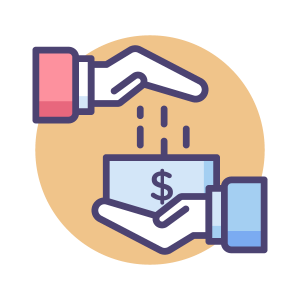Data collection is becoming a necessity for nonprofit organizations. Donors want to know their funding will be put to good use, while foundations want to ensure their assets are being utilized in the manner the organization intended. This kind of accountability is well-intended. The problem is, without the right tools, it’s difficult and expensive to accomplish. This leads to additional issues. But first, let’s take a look at how nonprofits are using data now.
How are nonprofits using data?
A recent survey from Nonprofit Technology Network and Idealware found that 99 percent of nonprofits surveyed tracked some kind of metrics. Eighty-nine percent collected financial data, 50 percent tracked data related to constituent outcomes, 41 percent took into account external data about their areas of interest.
That’s good news. Nonprofits understand the importance of monitoring success using data. When it comes to financial data, they can budget more effectively. Fundraising data helps them improve year over year.
However, nonprofits still face many issues. For instance, 27 percent experience problems collecting and working with data, 24 percent report a lack of expertise, 23 percent indicate challenges with technology.
On top of that, finding cost-effective technology that fits within an organization’s budget is always a challenge. With all of these elements combined, it’s no surprise that data collection tends to be shaky in some organizations.
The woes of data collection
In a recent article for Markets for Good, Idealware’s Executive Director Laura Quinn wrote about an issue plaguing today’s nonprofits: the need to lie about their data.
According to Quinn, when a key funder asks a nonprofit for data it doesn’t actually have, it’s a common practice for these organizations to make something up. She estimates that as many as half of nonprofits have done this. This seems outrageous, Quinn wrote, but it’s actually more complicated than it first appears. Most of the time, charitable organizations don’t lie outright. It’s more a question of filling in small details their systems were sophisticated enough to capture.
The problem is that many nonprofits lack the equipment they need to properly collect data. When organizations rely on paper-based polls taken during canvassing, it can be difficult to maintain accurate reports. You may know you talked to 2,500 people, but not be entirely sure what percentage of them were older than 50. You can make up information that’s relatively accurate to fill in the missing data. It could be close to correct and no one would ever notice the difference.
Who’s to blame for kind of behavior? While nonprofits should never fabricate information in this way, increasing expectations for data collection are starting to outpace the capabilities many organizations have. As Quinn pointed out, a foundation could fund a project at the same level as a previous grant, but change the reporting duties with the assumption the organization can handle it when they often can’t.
Collecting accurate data requires better equipment, reliable employees, and extra training. These things aren’t necessarily easy to obtain.
What can nonprofits do?
First, charitable organizations have to be open and honest about their capabilities. If they need to obtain a grant specifically to improve data infrastructure and reporting capabilities, so be it.
Second, nonprofits need to take a look at the software that exists and assess whether there is something that will meet their needs. Getting better at collecting data certainly isn’t an easy road, but it’s certainly possible. With the proliferation of technology on the market, there will be a platform that will be appropriate for various budgets.
CommunityForce’s donation management platforms, for example, can be scaled to meet different organizational needs, and its user-friendly interface is easy to learn.












